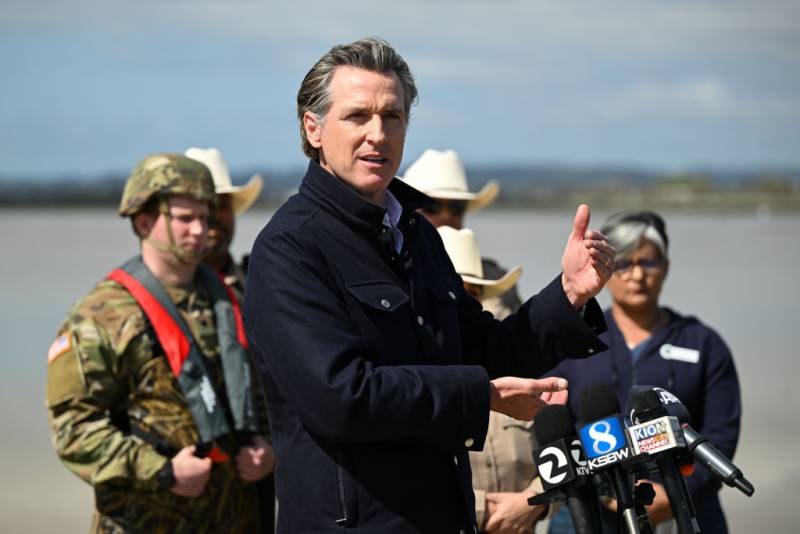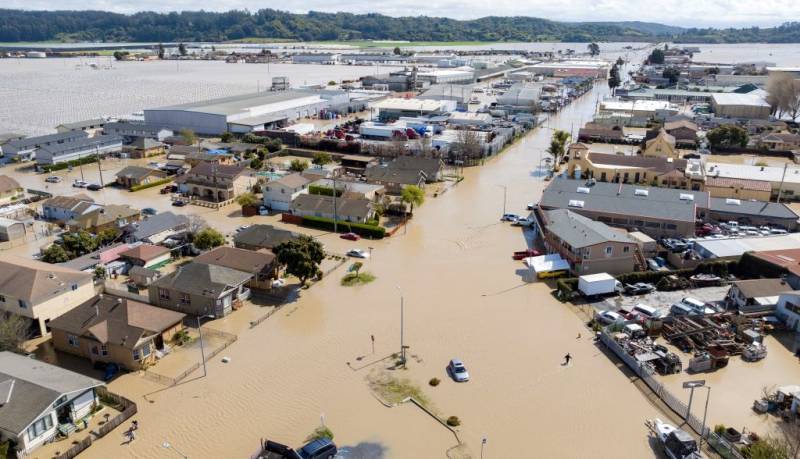At a press conference in the flood-stricken Monterey County town of Pajaro on Wednesday, Gov. Gavin Newsom talked up a plan, paid for by the U.S. Department of Agriculture and managed by United Way, to provide financial aid to farmworkers affected by floods and recent winter storms.
“There’s not a state in America, not one state, no other state that does more for farmworkers than the state of California,” Newsom said. “I want folks to know … it’s important to reinforce today, March 15th, the United Way was able to get $42 million from USDA, and they’re starting to send out $600 checks for farmworkers, regardless of their immigration status.”
Newsom was not referring to a new program for farmworkers who are in financial straits due to recent flooding and severe weather. Rather, as KAZU, KQED and The California Newsroom have learned, Newsom was referring to a $42 million farmworker grant managed by United Way that was announced in October of 2022, and has nothing to do with economic hardships due to recent storms.

The existing $42 million grant was created to provide “a one-time direct relief payment of $600 … to qualifying frontline farm, grocery, and meatpacking workers for expenses incurred due to the COVID-19 pandemic,” according to the USDA’s website.
Newsom’s office confirmed the $42 million he referred to in the press conference was in fact from the Farm and Food Workers Relief Grant Program, which is funded under the Consolidated Appropriations Act of 2021.
When asked whether waivers would be granted to flood-stricken farmworkers who do not meet the pandemic hardship requirements, USDA spokesperson Marissa Perry reiterated that the FFWR program was specific to those suffering COVID-related economic hardship.
At the press conference yesterday, Newsom also said money from the $42 million in aid would be available immediately. “Those dollars start going out today,” he said.
According to Katy Castagna, president of United Way Monterey County, the application is not yet open in Monterey. And, of the $42 million, $300,000 has been allocated to Monterey County, which would amount to 500 cash cards worth $600 each.

